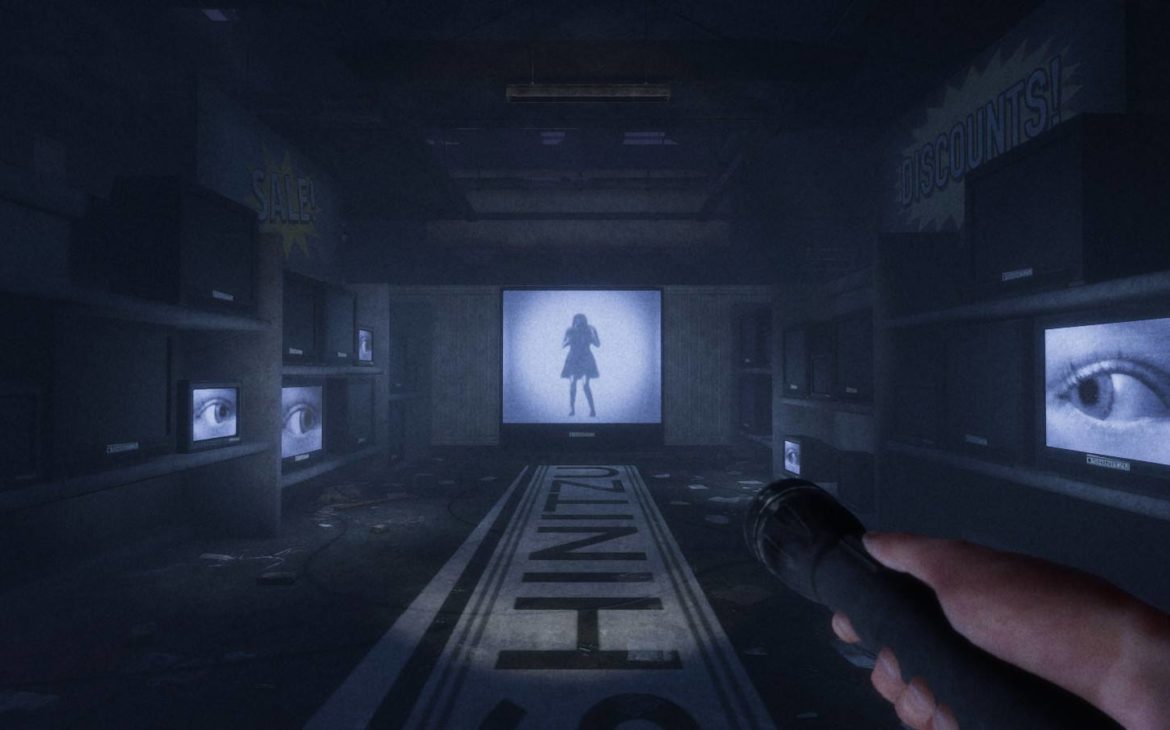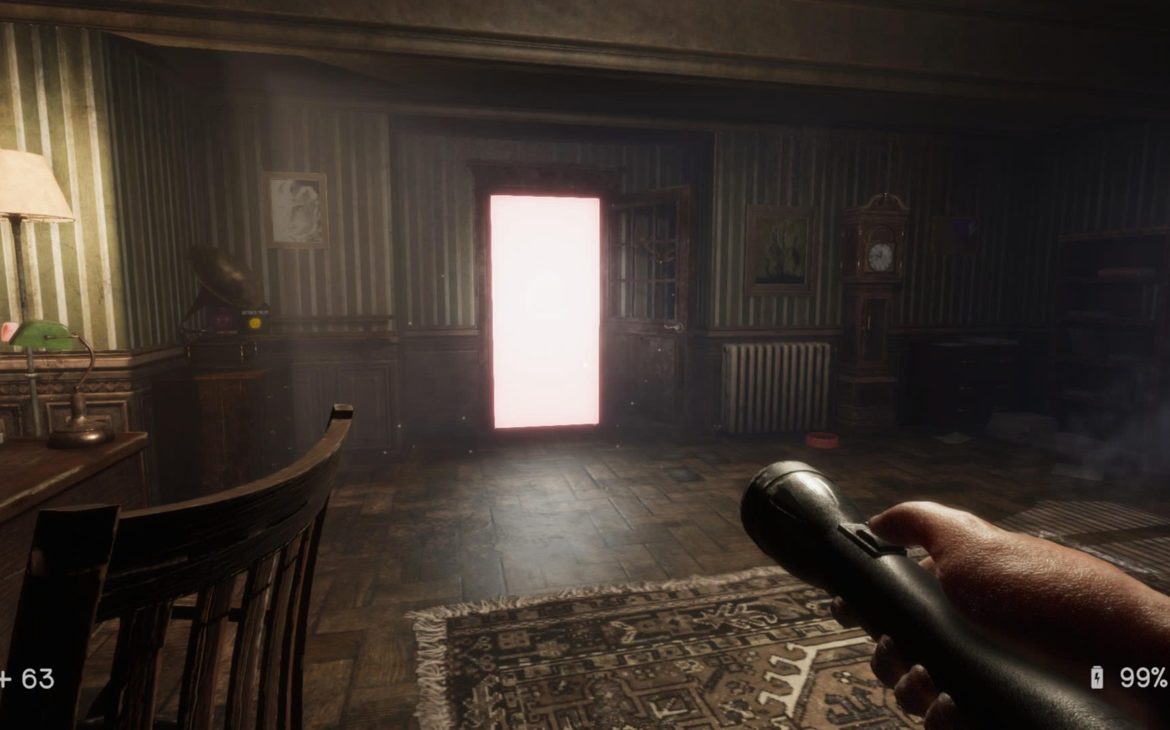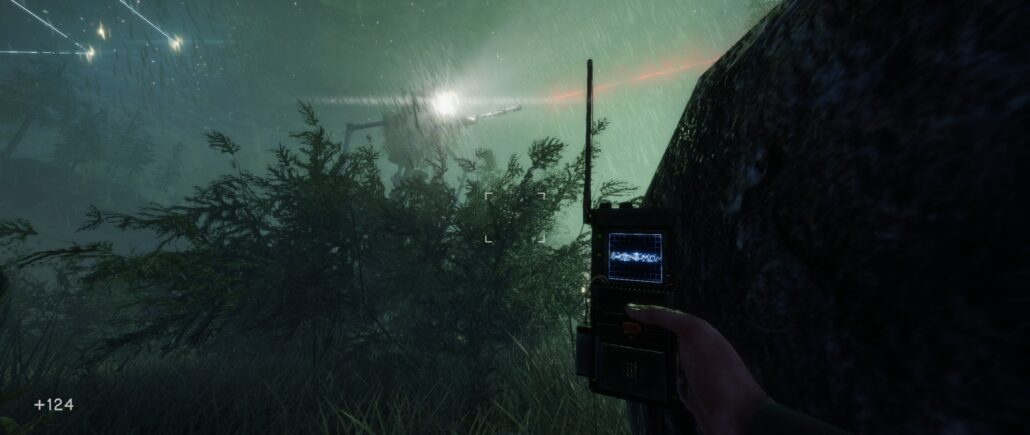In Sound Mind Review (PS5) – Caught Between Two Minds
In Sound Mind was somewhat of a surprise when I happened across it’s quirky trailer a couple of months ago. Promising a more introspective psychological hellscape, it had the potential to emulate more sinister and personal horror focused titles like Silent Hill 2. The trailer also hinted at some creative, psychedelic notes that would permeate throughout to break up the more heavy elements. All of this is to say, it had me intrigued as a unique and compelling title.
Thus, In Sound Mind arrived and I dug right in, embracing all of the strangeness and the interesting ideas. I’m sad to say it doesn’t live up anywhere near to the classics of the genre, despite some solid narrative hooks and clever delivery. Not so much a sound mind, let’s investigate what’s holding it back from true psychological enlightenment.
Mind The Memory Gap
As is commonplace in horror titles, your protagonist awakes in a trash room of a nondescript building with no sense of context nor reason. As you explore, our supposed hero – Desmond Wales – will slowly recover his memories and experiences with the folk of Milton Haven. In Sound Mind smartly delivers the history and context of Desmond’s role through the use of tapes you discover around the building you awake in.
See, Desmond is a psychologist by trade, and a busy one at that. Over the course of the runtime you’ll have 4 main tapes to discover in sequence – each tape representing a different personality that worked with our supposed hero. Transporting you into a new area, tapes act as separate levels that you’ll be required to progress through. As you progress, you’ll learn more about Desmond, his patients and the overall plot will begin to unfold.
There’s some compelling representation of different mental health disorders in how each patient’s level develops and the associated “boss” figures play out. The 4th tape in particular has brilliant creature design to create a looming, impending foe to overcome. Sadly, the overarching narrative thread that eventually ties it all together is predictable and about halfway through you’ll likely work out what’s going on, which leaves little to discover by the conclusion.
That’s not to say the story itself is bad. On the contrary, I fully enjoyed the individual stories from each tape and their resolutions. I just didn’t feel especially invested in the final act or conclusion, which while solid, does little new or interesting with In Sound Mind’s foundations. For a game hosting a hammed-up primary antagonist complete with confrontational phone calls every 5 minutes who also dons a suave suit complete with accompanying hat, it just falls into a routine you’ll likely have seen dozens of times before in other psychological horror media. Which is a shame, because In Sound Mind has some bold ideas buried in there somewhere, right in the subconscious, and it’s never fully embraced.

Explore The Recess of Your Mind
The mixed-bag trend continues into the gameplay, which unfortunately fares less well than the story. In Sound Mind has 3 main tenets: exploring, stealth and combat. Your main hub building you awake in has 3 floors and connects you to areas allowing you to access the tapes necessary to progress the narrative. As mentioned before, tapes are your gateways to separate levels with their own gameplay mechanic based on the “boss” that’s present.
Exploring was surprisingly the strongest of the game’s mechanics. As you work your way through areas you’ll come across hazards, barriers and problems you’re ill-equipped to solve initially. A boarded up door, a toxic splurge of lethal liquid, thick clouds of choking darkness and more will hinder your ability to freely discover everything hidden amongst your hub building and the other areas. Which makes finding various pieces of equipment and new items that much more exciting. A gas mask becomes your gateway to new rooms, a flare gun offering you a means to pierce through enemies and darkness alike.
I hadn’t expected In Sound Mind to have such effective Metroidvania-esque mechanics, but that’s precisely what it achieves. I was quickly finding myself noting inaccessible passages to return to once I’d discovered the necessary item. It then rewarded me for taking the time to do so in the shape of pills you take to increase your stats like health or stamina. It created a satisfying loop of acquiring a piece of equipment and using this to unlock access to optional side areas, which then rewarded you further in more items and upgrades. It’s also important to explore if you want a means to fight back against the nasties you’ll encounter, as the handgun and shotgun are tied to optional exploration, so make sure you look around properly!

Psychological, and Mechanical, Tedium
Alas, all good things must come to an end. Which brings me to the gunplay. Combat in In Sound Mind is, put simply, clunky, bland and just boring. Throughout your psychological journey, the greatest hardship you’ll face isn’t overcoming terrifying, emotionally disturbing material. Nope, instead it’ll be plucking up the motivation to actually push yourself through its poorly designed combat encounters. Weapons lack any sense of punch, enemies have a side-step dodge and otherwise bee-line directly towards you, making them easy to backpedal from and aim for. There are a grand total of 3 different common enemy types: a melee, a ranged “spitter”… and another melee, but bigger and tankier. Hardly the most inventive. Which wouldn’t be a problem in itself, but the lack of variety becomes a detriment after only one of the tapes, never mind the rest.
Stealth doesn’t fare any better either. You have the option to crouch and sneak around, using a suspiciously all-knowing shard of glass to spot enemies’ auras in the environment (as well as upgrade pills, handily!). Or, you can do what I did – walk out of the room you came into, re-enter, and they’ll have despawned. Stroll on through, job done. Failing that, good luck getting past them without being detected. Most enemy encounters are relatively bottle-necked, effectively forcing you into situations you can’t actually sneak past and the detection meter seemed completely random. In the end, it was simpler and quicker to just blast through or leg it past them, at least for common enemies. Bosses were a bit of a different task, for better and for worse.
For each tape, you’ll effectively be hounded throughout their corresponding level by the terrifying manifestation of their psychological damage, culminating in a confrontation for each. Each boss works in the same way – they’re effectively invulnerable to you until you fulfill whatever requirements the level demands. It creates some tension initially as you try to evade, get ahead and keep them from ripping you apart. Again, this only lasts until you realise you can usually run around or past them to get the objective done ASAP as your sprint speed is so quick.
There’s little real nuance or difference between them aside from aesthetic and narratively, as they all function relatively the same. One may be aversive to light, requiring you to move between light sources quickly while another may fire projectiles at you you need to use an item to distract them with. The final confrontations are climactic and the intertwining of narrative with gameplay does work much better here, but the buildup to them quickly becomes tedious.

A Disjointed, Fragmented Mind
Which also applies to the levels themselves. With only upgrade pills and exposition notes to discover in each level, there’s little to justify why tapes 3 and 4 are so needlessly long. These sections drag on for probably double the length of time they needed to, grinding the pacing to a halt and dispersing any real tension or fear from traversing them. It’s scientifically impossible to be bored and anxious at the same time, something In Sound Mind may have benefitted from considering before extending out these levels for such unnecessary lengths of time.
It probably isn’t helped by the poor signposting for progress. Certain sections have little to no environmental signals to aid you in figuring out what the Hell you’re expected to do to progress. With no direct map or objective indicators, it will likely have you wandering aimlessly for chunks of time at least a couple of times on your way to finishing. On the whole, the lack of hand-holding and obvious indicators was actually quite immersive and allowed me to work things out for myself, but there’s an element of poor level design which teters into frustrating territory.
But the question every horror game has to ask itself is whether it’s actually, you know, scary. Sorry to report, it really isn’t. Certain sections have some spooky goings on: dummies inexplicably moving out-of-camera, ghostly apparitions, doorways disappearing, all the usual creepy tropes are apparent and largely executed well. There’s some decent tension and foreboding in places, but it just never descends into actual horror. At no point was I fearing my next move or entering an area with trepidation, especially when enemies were involved. Levels are also generally bland, standard affairs: an empty supermarket, a lighthouse, a warehouse wharf which creates an air of the expected.
In Sound Mind does look nice (in horror terms) in places at least. Environments are relatively well-realised despite the lack of ingenuity. The levels are brimming with lighting effects, enemy creatures brizzle with smokey inconsistency (though run hilariously), the use of psychedelic colour palettes in occasional moments juxtaposes brilliantly. Again however, this is accompanied by poor texture work when up close in particular environments and nothing quite strikes you as you play. It feels like the ambition and ideas were reigned in just a bit too much, leaving the presentation lacking that certain punch that could have elevated its psychological terror more effectively.

Cognitively Crashing
Performance wise, I ran into a couple of significant issues. A hard crash completely hindered my progression by setting me back about 10 minutes worth of progress. The sequence that precedes the final confrontation didn’t load correctly, so I wandered around an empty black abyss for probably longer than I should before realising this wasn’t part of the game. Checkpoints are horribly inconsistent, sometimes a couple moments apart and other times being significant chunks of progress apart. There’s nothing devastating here, but it all just adds to the lack of polish and overall undermines the package as a whole.
Which sums up my time with In Sound Mind pretty well. It’s a solid psychological horror game which has a good story, rewarding exploration, quirky narrative ideas and decent presentation. However, it’s all just bogged down in poor mechanical implementation, bland environment design and a missed opportunity to run with their ambition and better ideas. I don’t doubt the dev team had an awesome idea for In Sound Mind. Perhaps with a bigger budget they could have realised it, but it all just left me feeling underwhelmed and uninterested by the end.
As a movie, In Sound Mind may have been an interesting and quirky, if slightly derivative, story of introspection and psychological understanding. As a game though, it simply doesn’t have the depth of mechanics to hold you through its 5-6 hour runtime. Sporting awful combat and stealth sequences, boring level design and inconsistent presentation, In Sound Mind activates too few of the adrenaline-controlling brain areas. Instead, it peaked some interest which slowly faded out the longer I played. You wouldn’t be out of your mind to play it if you’re a psychological horror fan, but you’ll potentially be in two minds of whether it was actually fun to play.

In Sound Mind is available on Xbox Series S|X, PS5 (reviewed on PS5), Nintendo Switch and PC
Developer: We Create Stuff
Publisher: Modius Games
Disclaimer: In order to complete this review, we were provided with a promotional copy of the game. For our full review policy, please go here.
If you enjoyed this article or any more of our content, please consider our Patreon.
Make sure to follow Finger Guns on our social channels –Twitter, Facebook, Twitch, Spotify or Apple Podcasts – to keep up to date on our news, reviews and features.



